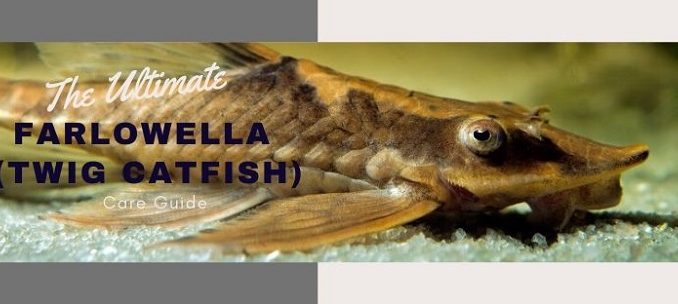
Fish come in all shapes and sizes, but it’s often the ones with a unique appearance that draw us in. Farlowella offers an interesting aesthetic for your tank.
Don’t expect a flurry of activity from them, most of their swimming is because they’ve been spooked. They are timid fish so tankmates must be thought out carefully.
The conditions of the tank have to be carefully controlled too. Farlowella needs the water to be perfect, or they’ll soon develop health problems.
If this is putting you off, don’t worry, after reading this guide you should have all the information you need for starting a new aquarium with Farlowella. We’ll cover every aspect of their care.
TABLE OF CONTENTS
Farlowella Facts & Overview
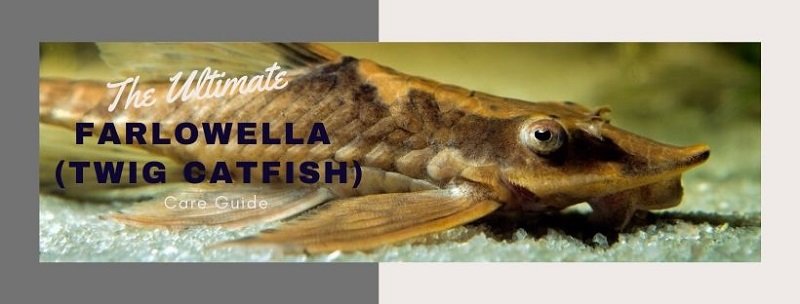
| Category | Rating |
| Care Level: | Intermediate |
| Temperament: | Peaceful |
| Color Form: | Brown with dark stripes |
| Lifespan: | 5-15 years |
| Size: | Up to 9 inches |
| Diet: | Herbivore |
| Family: | Loricariidae |
| Minimum Tank Size: | 20 gallons |
| Tank Set-Up: | Freshwater with plants and flat surfaces |
| Compatibility: | Species tank or peaceful community |
The term Farlowella refers to a group of fish rather than one particular species. It is a genus in the Loricariidae family that contains the Twig Catfish.
There are about 37 species of Twig Catfish but only two are usually sold for aquariums. These are Farlowella acus and Farlowella vittata. Of the two species, F. vittata is far more common because F. acus has become endangered.
The genus is native to South America, more specifically in the Amazon, Orinoco, and Paraná rivers. Here they live in flooded areas with plenty of vegetation and tree roots/branches.
The lifespan of these fish can vary considerably. Some can live for 15 years or more, whereas others don’t make it past 5 years old. Be prepared to care for these fish for a long time, but don’t be surprised if you lose them sooner than expected.
Twig Catfish are not one of the most commonly kept fish, so they are not stocked in every pet shop. It will depend on the size of your local store. Have a look around online to find a stock that is close to you.
A single fish shouldn’t cost too much, expect to pay between $5 and $10.
Typical Behavior
These fish are generally peaceful, but they are also timid. This is why they are best suited to a species tank since they can easily be outcompeted for food by tank mates.
Though they don’t necessarily shoal, these species enjoy being around their own kind and can be kept in large groups.
The only time that they may show aggression is while mating, at which point males sometimes become territorial while, but they will rarely injure each other.
A community tank is a possibility, but tankmates must be slow-swimming and peaceful to ensure they don’t scare your Twig Catfish.
Virtually all their time is spent attached to surfaces using their suckermouth. They don’t move very often if they do it’s usually just a hop to a new location. In the wild, remaining motionless helps them to blend in with their environment.
Appearance
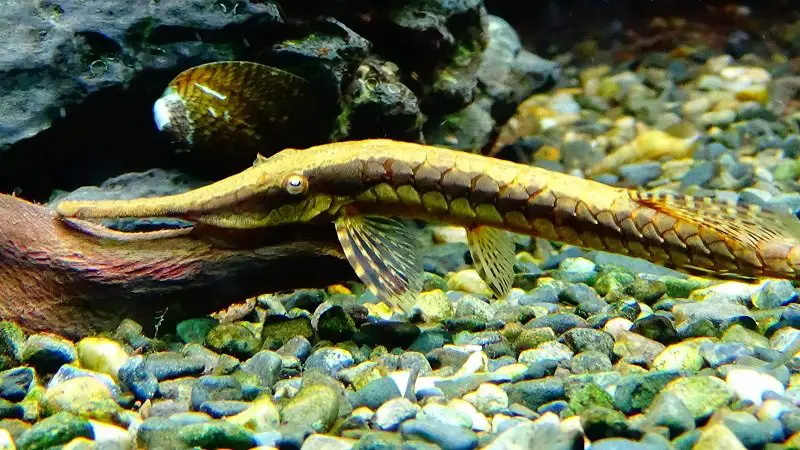
Twig Catfish are very thin and very long like a twig, hence the name. This works as an excellent camouflage in conjunction with their lack of movement, helping them to avoid predators.
Don’t worry, you’ll easily be able to spot them though.
They can reach sizes of up to 9 inches, which can take up a lot of space in an aquarium, especially if you plan to keep a group of them.
At the front of this long body is a pronounced rostrum with their eyes just behind. The fins are relatively small because these fish don’t need them for quick or intensive swimming. The tail fin is lyre-shaped; the top and bottom separate into individual points.
The body is a light brown with two dark stripes that run from the rostrum to the tail on each side of the body. The lack of color helps them stay hidden.
Sometimes the stripes break up into a speckled pattern. Other than this, there is little variation between fish, apart from the differences between males and females.
It shouldn’t be difficult to sex your fish. Males are larger and have a broader snout. A male’s snout will also become covered in odontodes (teeth on the surface) when getting ready to mate.
Habitat and Tank Conditions
In the wild, Farlowella is found in the rivers of South America, such as the famous Amazon River.
They tend to stick to the shallows where they are offered plenty of protection by tree roots and vegetation. Their camouflage wouldn’t be very effective in open water.
The trees above the water, and the plants within, block a lot of sunlight. Therefore, these parts of the river can be quite dim, especially at the bottom where Twig Catfish are usually found.
The water would flow at a gentle pace, much slower than the deeper sections towards the middle of the river. It would be warm, soft, and slightly acidic.
It is important that you recreate these water conditions in your aquarium, and maintain them. Farlowella is sensitive to changes in their environment. Poor water conditions will shorten their lifespan.
Tank Conditions
The conditions you should be aiming for are a temperature of 75-79°F and a pH of 6-7.
You will need a heater and an effective filter to maintain these conditions. Test the water each week so you can spot any changes as soon as they develop.
You shouldn’t need an air/water pump because Farlowella doesn’t like a strong current. Your filter outlet should create sufficient water movement.
Most of their time is spent at the bottom of the tank so this area needs to be perfect. A soft sandy substrate is ideal as it is less likely to scratch as fish swim across it in search of food.
Twig Catfish sit on surfaces so add some decorations on top of the substrate. Long pieces of wood are a good idea as they will support the whole length of the fish.
Plants make great additions for similar reasons to the decorations. They also offer some shelter from light and tank mates.
What size aquarium do they need?
Twig Catfish are comfortable in 20-gallon tanks or larger. Groups will need a bigger aquarium since they will each grow long and need their own space.
The smaller the tank, the harder it is to maintain the water conditions, which is crucial for keeping these fish healthy. If you are not an experienced aquarist, providing a larger tank will help you to care for them for longer.
How many can be kept per gallon?
These fish can get quite long, so each addition to the group will need at least 10 gallons of water. The bigger the tank, the more comfortable it will be.
Tank Mates
A community aquarium is possible, but you must choose tankmates carefully.
Twig Catfish are timid, so avoid aggressive, boisterous, or even simply large fish. This rules out many species, such as most Cichlids, but there are still some options out there.
You could try some small Characins such as Neon Tetras or Flame Tetras. Similar species include Danios (e.g. Zebra or Pearl) and Devario.
Invertebrates can make some good tank mates. Most shrimp and snails will stay out of the way and won’t frighten your Farlowella.
Once you have introduced tank mates to your Twig Catfish, keep a close eye on them. Make sure that they are getting the food that they need. If other fish are stealing it all then you may need to separate them.
Keeping Farlowella Together
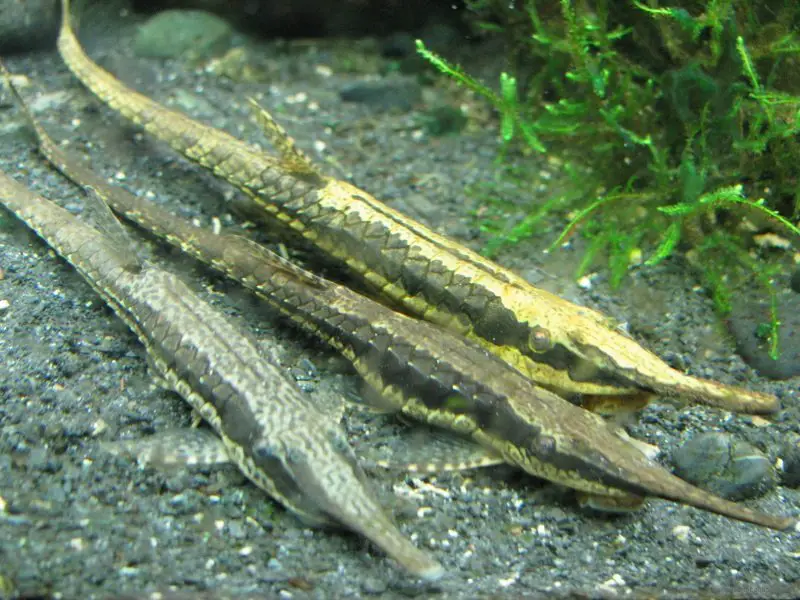
We’ve already mentioned that Twig Catfish can be successfully kept in groups. A species tank is arguably a better idea than a community tank since they are not good at competing for food.
The only time that you might notice problems in the group is while they’re mating. Males will sometimes scuffle but it’s rarely violent so you can leave them to their own devices.
Diet
These fish are mostly vegetarian. In the wild, they would rasp algae from the surfaces they perch on and scavenge any other plant matter that they come across.
Some people seem to think that you do not need to provide food for algae eaters because they eat the algae in the tank, but this is wrong.cYou must provide food to ensure that they have something to eat and to give them a varied, nutritional diet.
Algae wafers are the most commonly used. They can be found in most stores and will be happily accepted by your fish.
These can be supplemented with green vegetables from your kitchen. Try cutting up small pieces of zucchini, spinach, or lettuce.
You can add small amounts of meaty foods into a Twig Catfish’s diet, such as sinking frozen foods. Vegetation should always be the primary source of food though.
Feed them twice a day to ease work for their digestive system. You don’t need to give them much, there shouldn’t be lots of food sitting on the substrate through the day.
When you first get your fish, watch to make sure they are eating. Some might turn down meaty foods.
Observing your Twig Catfish is especially important if they have tank mates. It’s easy for Farlowella to be outcompeted for food, so make sure that they are getting some.
Care
Since these fish are very sensitive to a changing environment, they can be difficult to care for. We’ve already mentioned that perfect conditions must be maintained. It is crucial to remember this.
The ideal water conditions are mentioned above. To maintain them, you will need a consistent cleaning routine. Perform weekly partial water changes and wipe away excess algae before it can get out of control.
Use a water testing kit to check the conditions each week. This will alert you to any problems and help you to react quickly.
At feeding times, check that all the equipment is working. By placing a thermometer at the opposite end of the tank to your heater, you can check the temperature is correct.
While Twig Catfish are sensitive to poor water conditions, they tend to be more resistant to common diseases (like ich) than other fish. This might be due to their armored bodies.
This does not mean that they can’t get these diseases though, so watch out for common symptoms. For example, ich would produce white spots across their body. There aren’t any species-specific diseases to be aware of.
Breeding
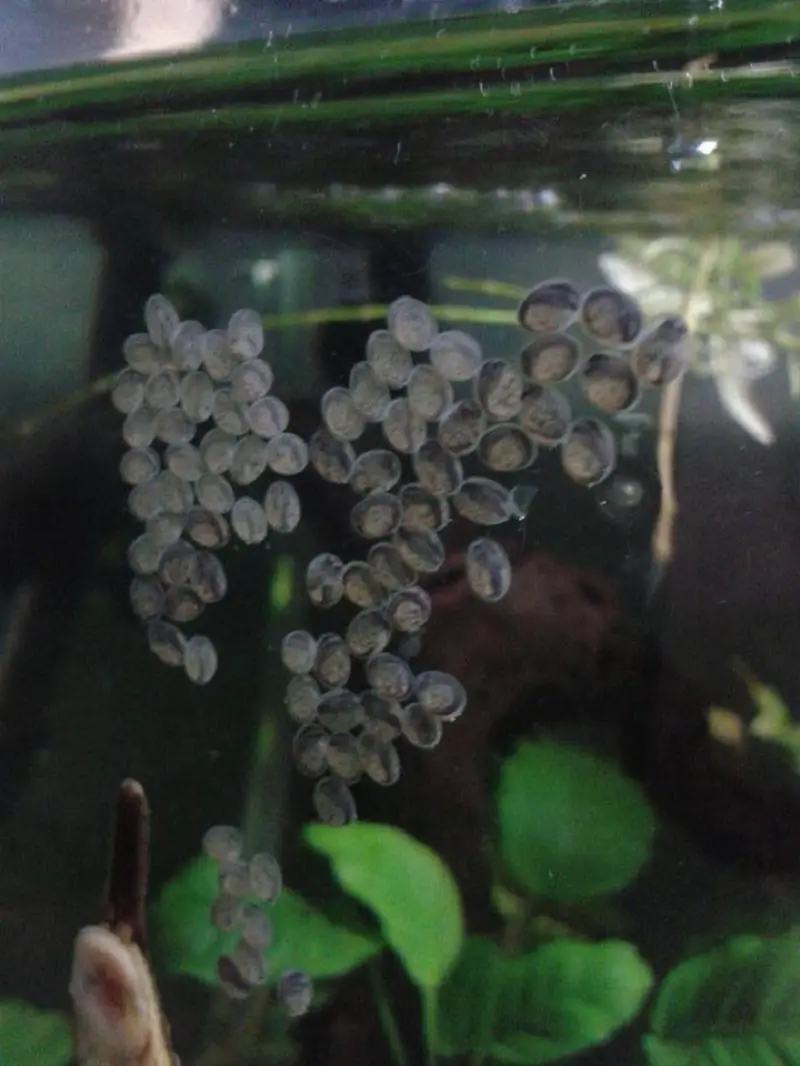
Breeding Twig Catfish is pretty easy. The conditions must be absolutely perfect. Though this can be difficult, you should be doing it as part of their general care anyway. If conditions are poor, they won’t even try to mate.
Gradually raising the temperature to 79°F may help to trigger Catfish spawning.
You are unlikely to see these fish courting and mating because it usually happens at night once the lights are turned off.
You may come back to your aquarium to find some eggs attached to flat surfaces around the tank. It is the male’s job to protect the eggs from harm. He will also fan them with his tail.
The eggs should hatch after a week, and the emerging fry will become free swimming after about 5 days.
The fry is just as sensitive to poor water conditions as the adults, if not more so. They can be difficult to feed as well. You might lose most of the fry after a few days.
Green vegetables are a good source of food for the fry. Cut up small pieces of spinach or lettuce for them. Algae is another good food source, so make sure there is plenty in supply.
Are Farlowellas Suitable for your Aquarium?
It’s unlikely that you’ll be able to add Farlowella into an already established tank, simply because the aquarium conditions and tank mates need to be thought out carefully.
Setting up the tank for these fish is easy, the problem is maintaining the environment indefinitely. This is why some previous fishkeeping experience is useful – to avoid common mistakes.
Monitoring the water conditions closely is key. Using a testing kit regularly will help you spot problems before they have a chance to cause harm.
Farlowella is lovely fish that turns the bottom of the tank into an area of interest, even without providing much activity.

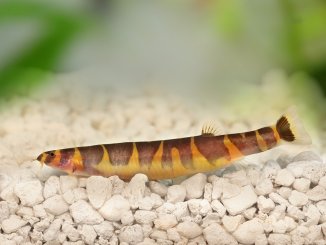
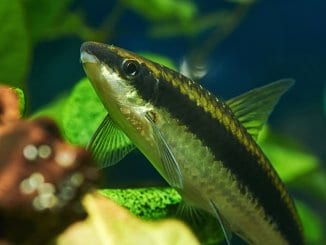
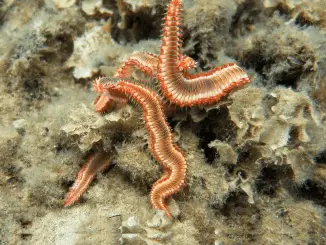
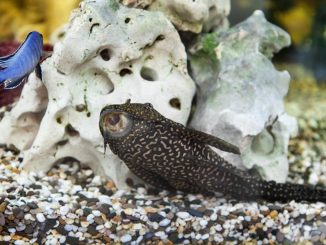
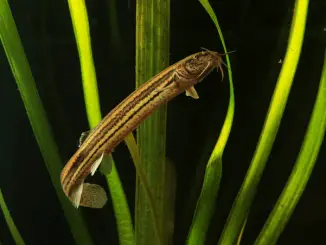
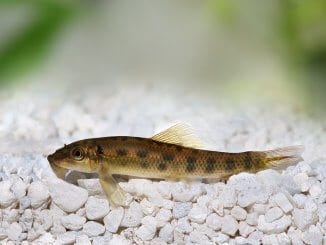
Be the first to comment